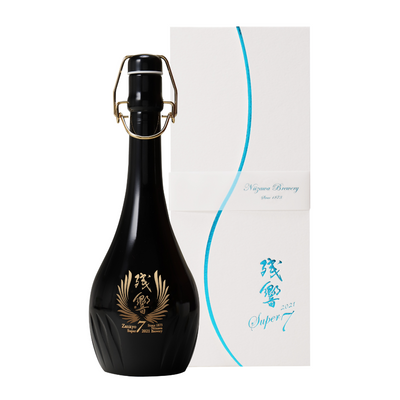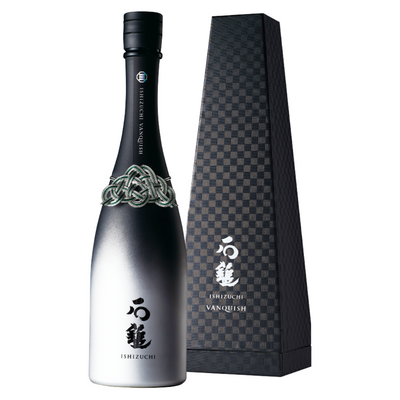What Is The Best Japanese Sake?
Sake, revered as a cultural treasure of Japan, has captivated enthusiasts worldwide with its nuanced flavors and rich heritage. But navigating the myriad of options available and discerning what constitutes the best sake can be a complex journey filled with surprises and discoveries. In this article, we'll delve into the intricacies of sake quality, challenging common assumptions and shedding light on the diverse world of this beloved beverage.
Understanding Sake
Before we dive into what sets the best sake apart, let's briefly explore what sake is. Sake, also known as nihonshu, is a Japanese rice wine made from polished rice, water, yeast, and koji mold. Unlike wine, which is fermented grape juice, sake undergoes a brewing process akin to beer, where the starch in rice is converted into sugars, which then ferment into alcohol.
Some aspects that influence the quality of sake:
- Quality Ingredients: The foundation of exceptional sake lies in the quality of its ingredients. Premium sake is typically crafted using high-grade rice varieties, such as Yamada Nishiki or Gohyakumangoku, known for their suitability for brewing sake. Additionally, pure water sourced from pristine regions and carefully selected yeast strains play crucial roles in shaping the flavor profile of sake. Nevertheless, the raw ingredients matter less in sake than for example with wine. Many top sake experts would be hard-pressed to consistently identify a type of yeast or rice.
- Polishing Ratio: One key factor that influences the quality of sake is the polishing ratio, which refers to the percentage of the outer layers of the rice kernel that are removed before brewing. Sake made from rice with a higher polishing ratio tends to exhibit more refined flavors and aromas. On the other hand, some excellent sakes are now made with rice that is only slightly polished because it allows for more variety in the brewing process.
- Brewing Techniques: The brewing process of sake is a meticulous art mastered by skilled sake brewers, or toji. Temperature control, fermentation methods, and timing are all critical factors that contribute to the final taste and quality of sake. Traditional brewing techniques, combined with modern innovations, result in sake that is balanced, complex, and harmonious on the palate.
- Flavor Profile: The best sake offers a captivating flavor profile that tantalizes the taste buds with layers of complexity and depth. From delicate and floral to robust and umami-rich, sake encompasses a wide spectrum of flavors, influenced by factors such as rice variety, water source, yeast strain, and fermentation duration. Each sake brewery imparts its unique signature style, reflecting regional traditions and craftsmanship.
- Grades and Classifications: Sake is categorized into various grades based on factors such as rice polishing ratio, brewing methods, and quality standards. Junmai, Honjozo, Ginjo, and Daiginjo are among the common classifications, with Daiginjo representing the highest grade of sake characterized by the highest rice polishing ratio and utmost refinement.
Reassessing Quality
Out of all of the points above, we would say that the brewing technique is the one factor that influences sake the most. Contrary to popular belief, higher polishing ratios are not necessarily indicative of superior sake quality. While polishing removes impurities and refines flavors, it's the brewer's skill and dedication that truly define excellence. Some excellent sake examples are simple Junmais that are made with lots of effort and are able to showcase the craftsmanship and artistry of the brewer.
Exploring Varieties
Sake classification, including Junmai, Honjozo, Ginjo, and Daiginjo, offers a glimpse into the diverse spectrum of sake styles. However, it's essential to recognize that not all sakes in a certain category are created equal. Even within the same category, there are significant variations in quality, reflecting the uniqueness of each brewery's approach and expertise. In essence, this means that just because you have a Daiginjo, doesn’t automatically mean it’s a great sake.
Navigating Complexity
Selecting the perfect sake amidst this diversity can be a daunting task. The complexity of sake extends beyond classifications and polishing ratios, making informed choices challenging for consumers. This complexity underscores the importance of trusted sellers like Kurashu, who curate their selection based on taste, quality, and craftsmanship.
Trusted Guidance
At Kuarashu, we understand the intricacies of sake and the importance of quality assurance. Our hand-selected collection represents the finest examples of Japanese craftsmanship, offering a diverse array of flavors and styles to suit every palate. With our expertise and dedication, we strive to guide enthusiasts on a journey of discovery, ensuring that each sip of sake is an unforgettable experience.
Conclusion
In the vibrant world of sake, quality is a multifaceted concept shaped by tradition, innovation, and the expertise of the brewer. As we navigate the complexities of sake selection, let us embrace diversity and celebrate the artistry that defines this beloved beverage. With trusted guidance and an open mind, every encounter with sake becomes an enriching exploration of Japanese culture and craftsmanship. Kanpai to the endless possibilities that await in the world of sake!





Leave a comment